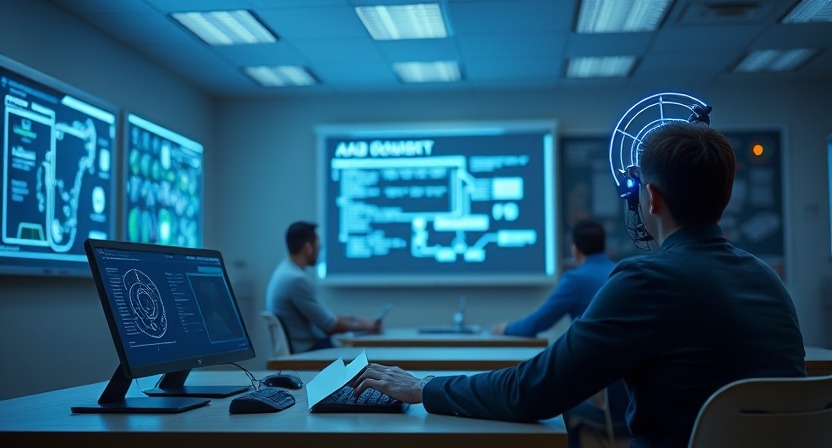Education is advancing swiftly, with artificial intelligence (AI) leading the way in driving this transformation. Australian classrooms are increasingly embracing AI to enrich learning experiences, assist teachers, and improve student outcomes. Let’s explore how AI is making a difference, the challenges it presents, and inspiring success stories from Australian schools.
Transforming Learning with AI: Personalized Experiences for Every Student
Every student learns differently, but traditional classroom setups can struggle to cater to individual needs. AI offers a solution by personalizing learning experiences, ensuring students get the support they need to succeed.
Tailored Learning Paths
AI-powered platforms like adaptive learning software assess a student’s strengths and weaknesses. These tools adjust the difficulty of lessons or exercises in real time, ensuring each student works at their own pace. For example, a student excelling in math might be offered more advanced problems, while another needing help with reading comprehension gets focused exercises.
Accessible Education for All
AI tools, such as text-to-speech and language translation apps, make learning more accessible. Students with disabilities or those from non-English-speaking backgrounds can engage more effectively with content, fostering inclusivity in Australian classrooms.
A Teacher’s Best Friend: How AI Reduces Workload
Teachers juggle countless tasks, from lesson planning to grading, while striving to address individual student needs. AI can be a game-changer in alleviating this workload.
Efficient Grading
AI can automatically grade multiple-choice and short-answer tests, saving teachers hours of effort. Advanced systems even provide insights into common student mistakes, helping educators refine their teaching methods.
Smarter Lesson Planning
By analyzing curriculum requirements and student performance data, AI tools suggest tailored lesson plans. These tools help teachers focus on impactful teaching strategies rather than administrative tasks.
Identifying Student Needs Early
AI-powered analytics flag students who might be struggling academically or emotionally. For instance, systems tracking participation and performance can alert teachers to intervene early, ensuring no student is left behind.
Ethical Concerns: Using AI Responsibly in Schools
Although AI provides significant advantages, it also brings crucial ethical considerations to the forefront. Schools and educators must adopt AI responsibly to ensure fairness, privacy, and transparency.
Protecting Student Data
AI systems often rely on large datasets, including sensitive student information. Schools must implement strict data security measures and ensure compliance with Australian privacy laws.
Avoiding Bias
AI algorithms can sometimes reflect biases in the data they’re trained on. Educators need to be aware of potential inequities and work with developers to create fair systems that benefit all students equally.
Maintaining the Human Touch
Despite its advantages, AI should never replace teachers. Education is as much about building relationships and fostering creativity as it is about academic achievement. AI should support, not substitute, human interaction in classrooms.
Inspiring Stories: Australian Schools Leading the Way
Several Australian schools are already leveraging AI to enhance learning and teaching. Here are some success stories showcasing AI’s potential.
A Melbourne Primary School’s Literacy Breakthrough
A primary school in Melbourne adopted AI reading tools to support early literacy. The program provided tailored feedback to young readers, boosting their confidence and comprehension. Within six months, the school reported a 20% improvement in reading levels.
Queensland High Schools and Predictive Analytics
In Queensland, high schools are using predictive analytics to identify students at risk of dropping out. AI tools examine attendance, grades, and participation trends, allowing staff to provide targeted support. This approach has led to a noticeable decline in dropout rates.
Innovative STEM Learning in Sydney
Sydney schools are integrating AI into STEM (science, technology, engineering, and mathematics) education. AI-driven simulations allow students to experiment with complex concepts like coding, robotics, and environmental science, making these subjects more engaging and interactive.
The Future of AI in Education: Collaboration is Key
AI has the power to transform Australian classrooms, but its implementation requires collaboration between educators, policymakers, and technology developers. Together, they can ensure that AI serves as a tool for inclusivity, efficiency, and innovation.
Teacher Training and Support
To use AI effectively, teachers need proper training. Professional development programs should focus on integrating AI tools into daily teaching practices.
Involving the Community
Parents, students, and educators should have a say in how AI is implemented in schools. Transparency about its benefits and limitations is essential for fostering trust and understanding.
Striving for Equity
Ensuring all schools, regardless of location or funding, have access to AI technology is crucial. Equal access to AI tools can help bridge educational gaps and provide opportunities for students across Australia.
Final Thoughts
Integrating AI in Australian classrooms is not just about keeping up with technology—it’s about creating more engaging, inclusive, and efficient educational experiences. From personalized learning to teacher support, AI holds immense potential. However, its success depends on responsible usage, ongoing collaboration, and a commitment to putting students first.
As Australian schools continue to pioneer innovative uses of AI, they pave the way for a future where every student has the opportunity to thrive.







